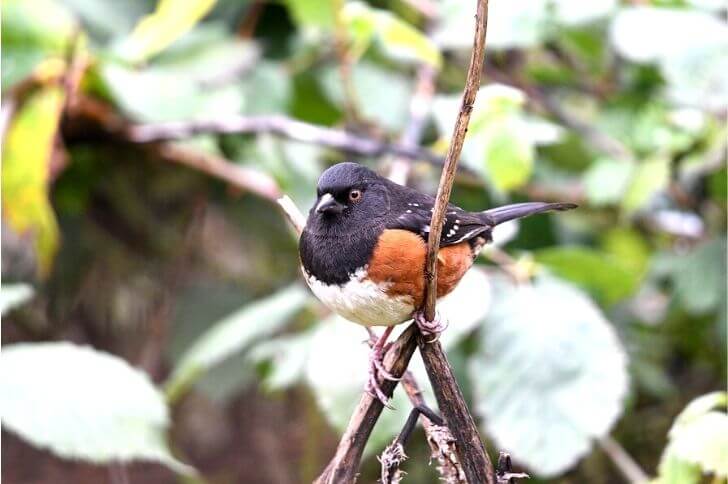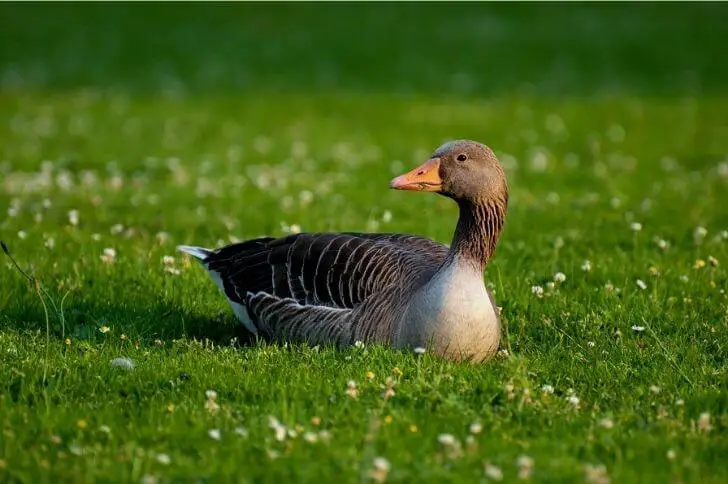Wild birds are a fascinating and unique part of North American wildlife. There are many different species of wild birds that can be found all across the continent. Some of the most popular and well-known species include eagles, songbirds, hawks, and owls.
Below we’ll look down at different species of the avian world that you can spot. We’ll also add their pictures and identifying features to help make your bird watching experience easier and more memorable.
List of Wild Birds in North America
1. Woodpeckers

Woodpeckers are one of the most interesting birds in North America. These fascinating creatures are known for their wood-pecking habits, but there is much more to them than that.
The largest woodpecker in the world is the pileated Woodpecker, which is native to the Eastern United States.
The smallest woodpecker in the world is the Downy Woodpecker, which is found in Northern parts. It is only about 6 inches long!
Other woodpeckers of North America include:
- Northern flickers
- Red-bellied woodpeckers
- Yellow-bellied sapsuckers
- Arizona woodpecker
- Red-headed woodpecker
2. Robins

Spring isn’t spring without the sound of a robin’s song. This medium size wild bird is a common sight in yards and gardens across the region.
This red-breasted bird is named after the European robin because of its reddish breast. Both birds are members of the thrush family. The American robin is slightly larger than its European cousin. Other than the American robin, you can find;
- White-throated robin
- Rufous-backed robin
3. Falcons

Falcons are birds of prey with long, pointed wings and sharp talons. They are fast and agile fliers, able to chase down their prey at high speeds. These wild birds typically hunt small mammals and birds, although some larger species may take down larger prey such as rabbits or hares.
Most falcons are solitary hunters, although some species will hunt in pairs or small groups. Some common falcons in United States include:
- American kestrel (smallest)
- Peregrine falcons
- Prairie falcon
- Merlin
- Crested Caracara
4. Eagles
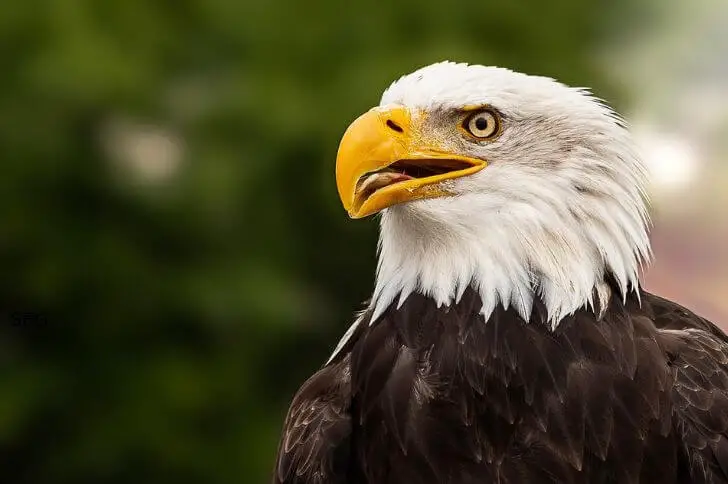
Eagles are carnivores and hunt during the day. Their diet consists mostly of small mammals such as rabbits and rodents, but they will also eat reptiles, fish, and other birds. They also have keen eyesight and can spot their prey from more than a mile away.
Some common American eagles include:
- Bald eagles
- Golden eagles
- Steller’s Sea eagles
5. Towhees

Towhees are wild birds that are all-year residents in North and South America. They are typically found in wooded areas and forests. The towhee is a medium-sized bird with a long tail. It is known for its loud song, which consists of a series of trills.
In the Americas you can find:
- Eastern towhee
- Spotted towhee
- Canyon towhee
- Green-tailed towhee
Related Read: Check other black orange and white birds
6. Chicken

The chicken, a domesticated fowl, is a subspecies of the red junglefowl. The adult male is typically called a rooster and the adult female is called a hen. Chickens are omnivorous and eat a diet consisting of seeds, insects, and other small animals. You can raise these birds for eggs and as pets. Some common breeds to consider include:
- Brahma
- California gray
- Rhode island Red
- American Game
7. Common Blackbird
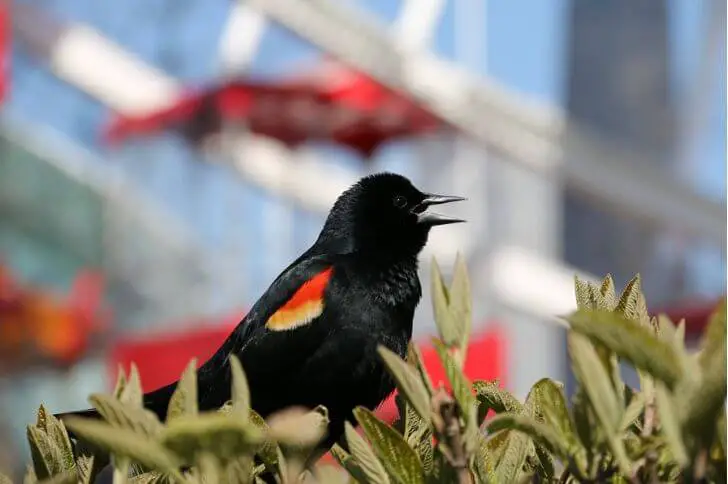
The blackbird is a species of true thrush. Birds of this species are larger than the American robin and sport long tail feathers. Blackbirds are found in woods and gardens and build their nests in trees. They eat insects, earthworms, berries, and fruits. Some common blackbirds include:
- Yellow-headed blackbird
- Red-winged blackbird
- Tricolored blackbird
8. Junco
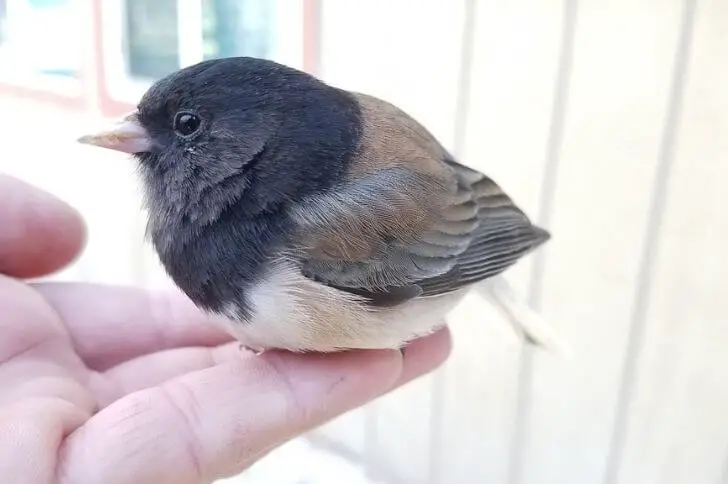
Junco birds are one of the most common birds in North America. They are small, sparrow-like birds with gray and white feathers. They are often seen in flocks near the ground, searching for food such as insects and seeds.
These birds breed in the spring and summer, and their nests are usually made of grasses, moss, and twigs. In winter, juncos migrate to southern regions where it is warmer. Some juncos even travel as far as Mexico!
Junco birds that prefer this region include:
- Dark-eyed juncos
- Yellow-eyed junco
9. Ducks

Duck is a common name for a waterbird with webbed feet. Ducks are divided among several subfamilies in the family Anatidae;they are mostly aquatic birds, living in both freshwater and marine environments, although there are a number of species that live predominantly on land, such as the chicken-like Muscovy duck.
Most ducks feed on aquatic invertebrates or plant material, but there are exceptions; the Old World genus Sarkidiornis is adapted to grazing on grasses, and the Magpie goose feeds on insects as well as plants. To avoid predators, some ducks will dive into the water. Common ducks include:
- Mallards
- Gadwall
- Blue-winged teal
- Wood duck
- Bufflehead
10. Cranes

Crane birds are some of the most interesting and beautiful birds in the world. There are many different species of crane, all with their own unique features.
One of the most interesting things about these wild birds is their long necks. Some species of crane have necks that can be up to two feet long! This allows them to reach high branches and leaves that other birds can’t get to.
These larges are also known for their beautiful plumage. Many species have brightly colored feathers, which make them stand out in a crowd. The colors of a feathers can be used to help identify which species it is. Some interesting subspecies include:
- Whooping cranes
- Sandhill cranes
If you’re ever lucky enough to see this bird in the wild, you’ll be sure to remember it for its beauty and uniqueness.
11. Eastern Bluebird

How many bluebirds do you know? In North America, the bluebird is a popular bird because of its beautiful blue plumage. The male is especially striking with his bright blue feathers. It is a member of the thrush family and can be found in woods and forests across the continent.
This medium-sized wild bird is not only popular for its beauty, but also for its song. The male sings a beautiful song to attract a mate. Common types include:
- The Eastern bluebird
- Western bluebird
- Mountain bluebird
12. Kingbirds
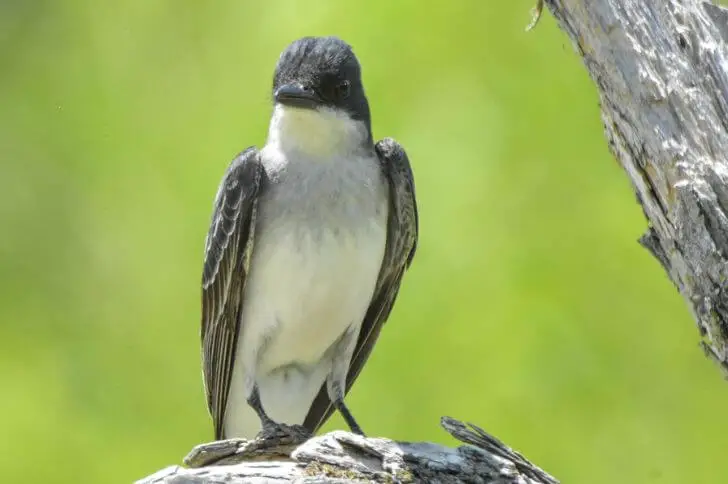
Kingbirds breed in open areas across North America, including fields, meadows, and edges of forests. They typically nest in trees. They eat a variety of insects, including flies, beetles, and caterpillars.
These wild birds are important because they help to control insect populations that can damage crops. Kingbirds are also known to protect their territories; mostly by attacking predators such as crows and hawks. Most common wild birds of this species are:
- Eastern kingbirds
- Western kingbirds
- Tropical kingbirds
- Cassin’s kingbirds
13. Cockatoo

There are 21 species of cockatoo, and they are known for their distinctive crests and loud calls. These intelligent wild birds can learn to mimic human speech.
They are also social birds, and they live in flocks of up to 30 birds. They nest in tree hollows, and they feed on seeds, fruits, and insects. Cockatoos are sometimes considered pests because they damage crops.
In North America you can have these cockatoos as pets:
- White cockatoos
- Umbrella cockatoo
14. Penguins

Penguins are interesting creatures. These birds are known for their tuxedo-like feathers and their funny waddle. They are also very good swimmers; hitting speeds of up to 25 miles per hour!
Penguins live in cold climates, such as Antarctica. In fact, they are so well-adapted to cold weather that they can even survive temperatures as low as -76 degrees Fahrenheit!
When it’s time to mate, penguins find a partner and remain with that partner for life. After a female lays her eggs, the male penguin will help incubate them.
Some common penguins you can see in the wild are:
- Galapagos penguins
- King penguins
- Royal penguins
15. Hawks
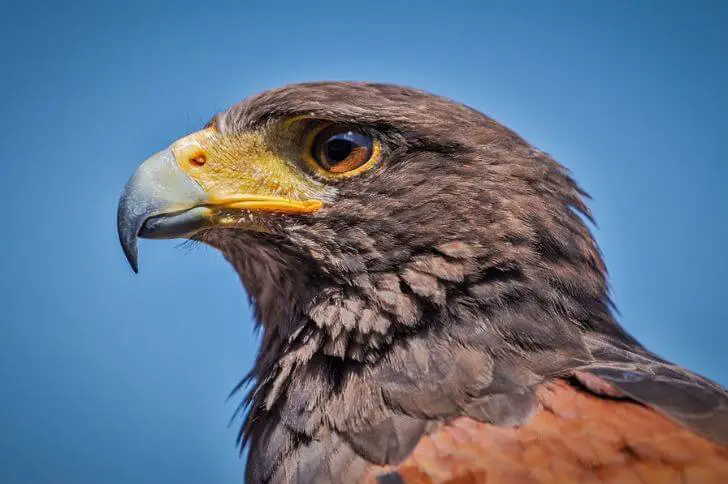
Hawks are one of the most feared predators in North America. But these birds of prey are more than just fierce hunters. They are also beautiful, fascinating creatures with a unique place in the ecosystem.
There are more than 200 species of hawks worldwide, and they come in a variety of shapes and sizes. They play an important role in controlling populations of small mammals and rodents.
Despite their reputation as ruthless predators, hawks are also known for their striking plumage and impressive aerial displays. Some common American hawks include:
- Red-tailed hawks
- Sharp-shinned hawks
- Common black hawk
- Swainson’s Hawk
16. Hummingbirds
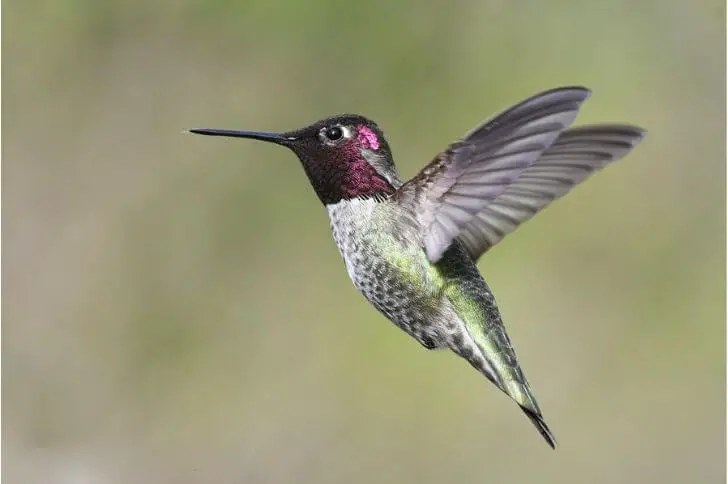
Found in parts of the United States, hummingbirds are known for their ability to fly backwards and hover in mid-air.
Although they are tiny, hummingbirds are feisty creatures that are not afraid to defend their territory from other birds or animals. The males of the species are especially territorial and will often fight to the death to defend their territories.
These little birds get their name from the humming sound that their wings make as they beat faster than the eye can see. Their diet consists mainly of nectar from flowers but they will also eat small insects.
Because of their need for nectar, hummingbirds play an important role in pollination. Common birds of this unique species include:
- Ruby-throated hummingbirds
- Rufous hummingbird
- Broad-tailed hummingbird
- Black-chinned hummingbird
17. Honeycreepers
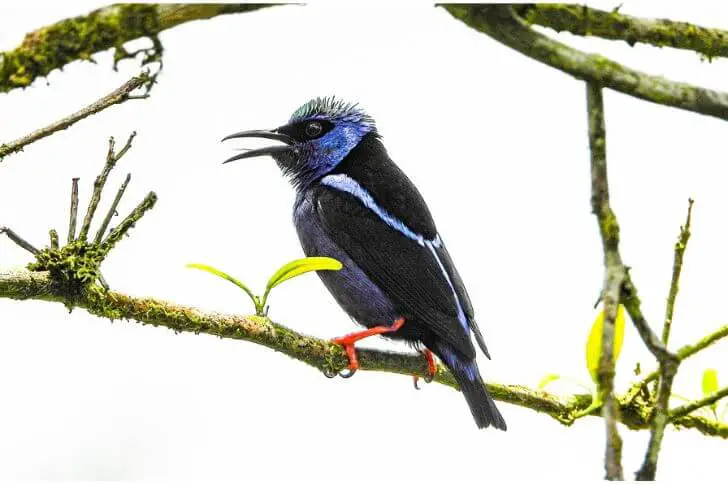
Honeycreeper birds are a group of small colorful birds. They are nectarivores and are found in the forests of Hawaii as well as Central and South America. There are around 50 species of honeycreepers. The birds have long, curved bills which they use to feed on nectar from flowers.
They help to pollinate plants as they feed, and they also eat insects which helps to keep the forest healthy. In Hawaii you can see:
- Scarlet honeycreepers
- Palila
- Akepa
- Laysan finch
Also read: Check other interesting birds of the big Island
18. Jay Birds
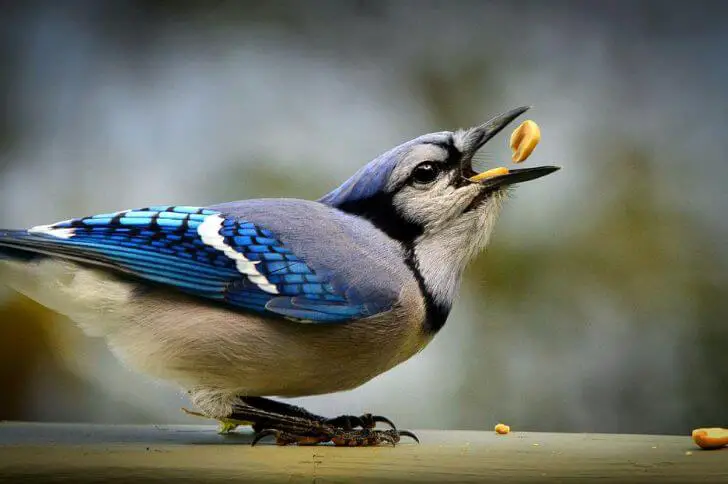
Jay birds are popular types of wild birds in North America. They are known for their beautiful plumage and their cheerful songs.
They favor different habitats, including forests, gardens, and even cities. Although they are not the largest bird, they are still an impressive sight. In this region you can watch:
- Blue jays
- Canada jays
- Brown jays
- Scrub jays
- Steller’s jays
19. Owls

Owls are nocturnal birds of prey that call North America home. They typically have large, round heads with long, pointed ears, and their feathers are adapted for silent flight. They hunt at night using their excellent hearing and vision to locate their prey.
Owls are fascinating creatures, and there is much that we still don’t know about them. For example, scientists have only recently discovered that some owls can rotate their heads up to 270 degrees! Owls that are common in North America include:
- Barn owls
- Great horned owl
- Snowy owls
- Barred owls
20. Warblers

Warblers are a family of small passerine and insectivorous birds. There are over fifty species of wild birds in this family and the majority are found in the Northern Hemisphere. They are small birds, ranging in size from 4 to 5.5 inches in length. They have slim bodies and long tails. Most warblers are brightly colored, with many different hues and patterns present among different species.
The diet of a warbler typically consists of insects and other small invertebrates. These birds use their sharp beaks to catch prey items on the ground or in mid-air. Some warbler species also eat fruits or berries.
Common warblers in the northern hemisphere include:
- Blackburnian warblers
- Pine warblers
- Painted redstart
- Ovenbird
- Blackpoll warbler
21. Vultures

As the population grows, so do waste piles. And where there is waste, there are vultures. These scavengers play an important role in the ecosystem by cleaning up carcasses and keeping the spread of disease in check. But they are often misunderstood and persecuted.
Vultures are not predators, but scavengers. They do not kill animals for food, but rather feast on the carcasses of dead animals. Most common vultures of the United States include:
- Turkey vultures
- California condor
- Black vulture
22. Plovers
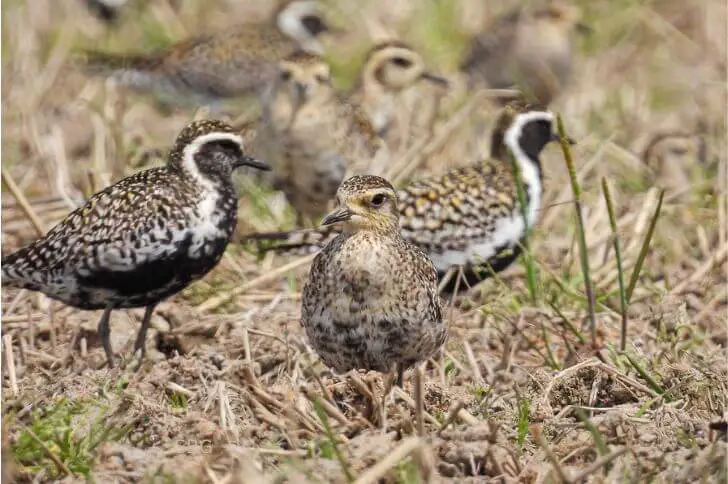
There are many different types of plovers, all of which are interesting and unique birds. These wild birds generally live near water, as they feed on insects, crustaceans, and other small animals that they find in the sand or water. Plovers are also known to eat plants and seeds.
Most plovers are relatively small birds, with most species being between 8 and 10 inches in length. However, the largest plover species, the black-bellied plover, can reach up to 11.4 inches in length. Plovers have long legs and bills, and their wings are typically long and pointed.
Plovers typically have brown or gray plumage with white markings. Some species also have black plumage. Within America you can find:
- Black-bellied plovers
- American golden-plover
- Piping plover
- Snowy plover
23. Pigeons

There are many different types of pigeons, but the most common type is the white-winged dove. These birds are medium-sized and have long tails. They are mostly gray in color.
pigeons are very gentle birds and they mate for life. They build their nests in trees or on the ground. The female lays two eggs each nesting season.
They eat seeds, fruits, and insects. They use their beaks to pick up food from the ground. Some people like to feed doves because they are so tame and gentle. Other wild birds you can see include:
- Zebra dove in Hawaii
- Rock pigeon
- Mourning doves
Final thoughts on wild birds of North America
There are numerous wild birds across North America. From birds of prey to quiet doves to colorful songbirds, there is plenty to see. They are a vital part of our ecosystem and help to control pests, pollinate plants, and disperse seeds.
Without them, our world would be a very different place. You can help wild birds by providing nesting materials, planting native plants, and avoiding the use of pesticides.
Sources:
https://en.wikipedia.org/wiki/Plover
https://www.birds-of-north-america.net/doves.html
Hi fellow bird watcher. Welcome to our small corner of the world. At the spanishbirdguides.com our mission is to share with other bird watchers the things we love about birds, where to go bird watching within the United States, and more. I’d also love to hear from you. Feel free to contact me about your bird watching escapades, share videos, photos and more.
